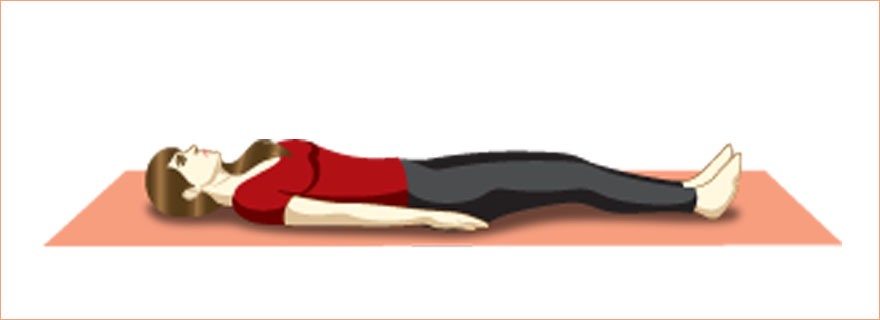A Yoga Posture for Rejuvenating Body and Mind
A Yoga Posture for Rejuvenating Body and Mind
Yoga Posture – Shavasana (Corpse Pose) Shavasanaor ‘Corpse Pose’is probably the most simple and easy posture of Hatha Yoga. This simple posture can relax your body and mind and rejuvenate your energies.

As the name suggests you need to lie down supine without any tension and looking lifeless as a corpse (Shav).Perform this asana three times a day; morning, mid-day and in the evening. You can do this asana at any time if you feel tensed up or mentally upset. If you do many Hatha Yoga postures then do Shavasana after each posture. Yoga Can Transform You
How to do Shavasana? …
Step 1: Lie down supine on a mat spread on the floor with legs straight but spread slightly apart (about one foot between the feet) and both arms resting on the sides but slightly away from the body on each side. Keep both palms relaxed but facing up.
![]()
Step 2: Slightly shake both feet to make them relaxed. Slightly shake both shoulders to make them relaxed. Lastly shake the neck and head to make them relaxed.

Step 3: Now breathe normally without any conscious control. Mentally scan the whole body to ensure that no part is under stress. Keep lying in this relaxed pose and focus attention in the area between eyebrows with closed eyes. Let your mind be without any specific thought and enjoy this rejuvenating state for as long as possible.

Step 4:End this posture by turning to right side and slowly sitting up for a few moments before standing.

Benefits of Shavasana …
Regular practice of this posture gives the following benefits:
• Keeps the body relaxed while working.
• Gives mental peace and balance. Meditation for Peaceful Life
• Transports you into a meditative state.
• Gives ability to focus mind on anything.
• Improves blood circulation.
• Relaxes the nerves.
• Gives ability Control Your Mind with ‘Hong-Saw’ Technique to think clearly and deeply.
• Gives freedom from anxiety.
• Cures blood pressure and sleep related problems.
• Rejuvenates the whole body and mind. Ushtrasana Yoga for Curing Cervical Spondylitis
Article by: Jyotirvid Pawan Kumar
You May Also Like
© 2025 by Truthstar Future Vision Pvt Ltd All Right Reserved



